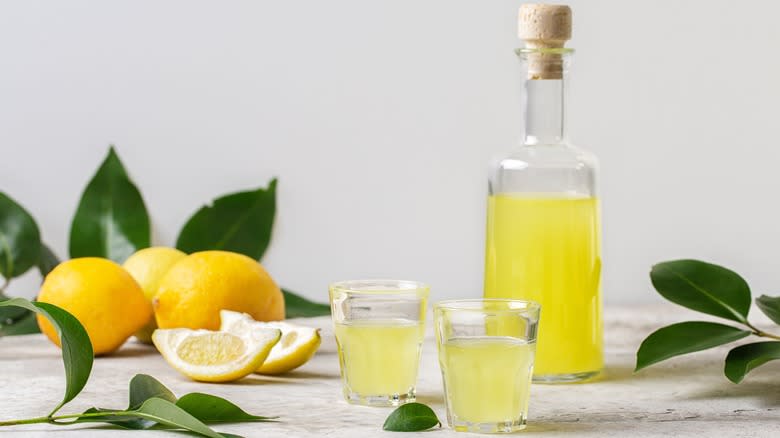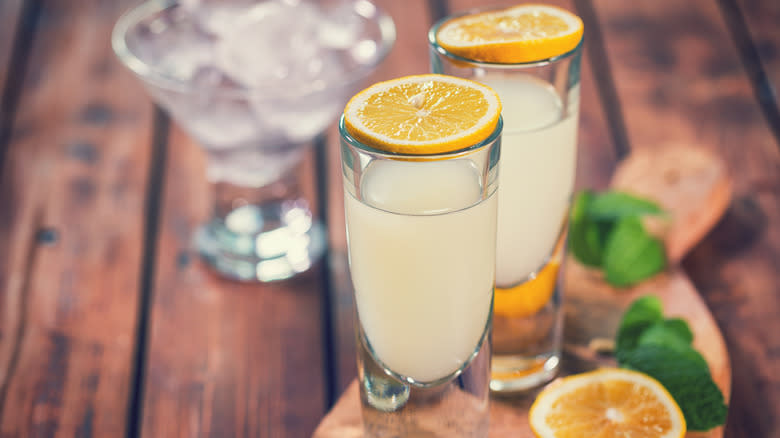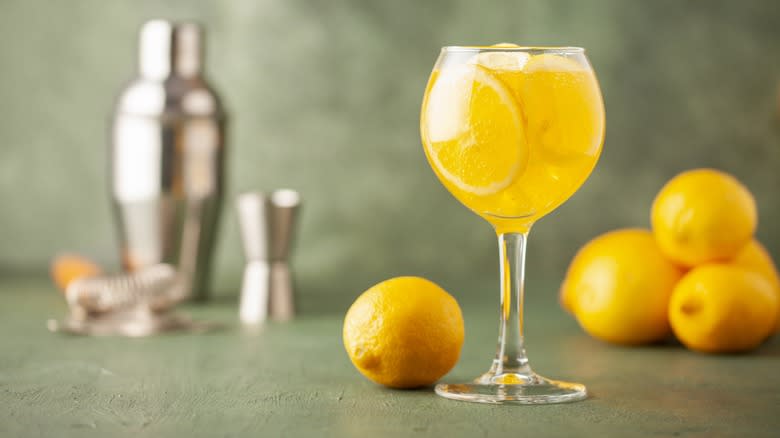What Is Limoncello And How Is It Made?

If you've ever sipped on some limoncello, your mind likely immediately transported you to an al fresco bar overlooking Italy's Amalfi Coast or the beauty of Capri. This bright, lemony liqueur is symbolic of one of Italy's most beautiful areas, and its lemon flavor is a perfect blend of sweet and sour.
The liqueur's origins have mixed stories. Some say it was first created in Sorrento, while others say Amalfi or Capri. The most widely known origin story says it was born in Capri as the brainchild of a woman named Maria Antonia Farace. The trademark was later registered in 1988 by Massimo Canale, who was Farace's great-grandson. Since then, limoncello has made its way around the world.
While "limoncello" might signify any liqueur made with lemons, it's not the true, traditional limoncello unless it's made with lemons grown along the Amalfi Coast or on Capri (at least, that's what the locals will tell you).
Read more: The Ultimate Vodka Brands, Ranked
How Is Limoncello Made?

According to Italians, the lemons make all the difference. Lemons grown between the small towns of Vico Equense and Massa Lubrense, which are about 10 miles apart, are supposedly the best for limoncello production, as well as lemons grown anywhere on Capri.
The process for making your own limoncello is actually pretty simple. You just need a plain, 100-proof vodka (for stronger limoncello, you can also use Everclear), plus some lemons, sugar, and water. The water and alcohol amounts should be a one-to-one ratio, while the number of lemons depends on how much liqueur you're making. So, if you're making a small batch and just using two cups of alcohol plus two cups of water, you'll need four lemons.
Limoncello is made by letting the lemon peels soak in the alcohol for about two weeks. Once the lemon peels have infused into the alcohol, the alcohol is blended with a mixture of lemon juice, sugar, and water to get that traditional sweet-yet-sour limoncello flavor. While it's natural to follow a recipe if you've never made it, Chris Donahue, the former beverage director at Casa Nonna in New York City, told Daily Meal in 2013 that following a recipe isn't always necessary. "Our palates are different ... create something that appeals to you, your friends and family," Donahue said. "Taste test along the way, and if you want a sweeter flavor, add simple syrup; for increased tartness, more lemon zest; to taste less alcohol, add water."
How Is Limoncello Used?

Once you've created your batch of limoncello, the easiest way to enjoy it is to sip it in small quantities and soak up all of its delicious flavor. It's typically served at the end of a meal; about one shot glass is usually a standard serving. However, you can also make cocktails with the liqueur if you prefer a larger drink or one with a toned-down flavor. You can blend it with a little more vodka, plus some lemon juice and sugar to create a limoncello martini, or add it to some gin, then top it off with club soda and a little mint to create a spin on a Tom Collins.
Limoncello can also be used in baking; it can be added to curds, cakes, and tarts for additional flavor, or even as a tasty addition to lemon meringue pie. If you're making a large batch, you can use it in multiple ways, and its long shelf life means you can save it for a rainy day, too; homemade limoncello will last up to two years in your liquor cabinet.
Read the original article on Daily Meal.

